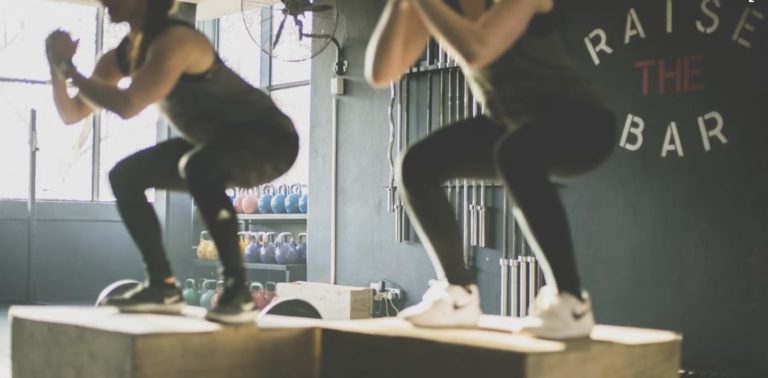What Is Kick Boxing?
Kickboxing is a dynamic combat sport that combines elements of traditional boxing with various martial arts techniques, including kicks and strikes. This unique blend not only provides an intense workout but also enhances physical fitness, self-defense skills, and overall health.
What sets kickboxing apart from other martial arts is its emphasis on striking techniques, agility, and conditioning, making it an effective and engaging way to stay fit.
In this post, we will explore the health benefits of kickboxing, the different styles available, and the rich history that underpins this exciting discipline.
History of Kickboxing
Kickboxing may have origins in ancient martial arts, combining striking techniques from cultures such as Thailand's Muay Thai and Japan's traditional karate. It began to gain popularity in the mid-20th century, particularly in the United States, as a fusion of Western boxing and Asian martial arts, allowing practitioners to use both punches and kicks.
Different styles, such as American and Japanese kickboxing, may have developed unique rules and techniques. The sport's popularity may have been further boosted by competitive events and televised matches.
Today, kickboxing may serve not only as a sport but also as a popular fitness option for those seeking a challenging workout and self-defense skills.
Key Techniques and Moves
Mastering essential techniques and moves is crucial for excelling in kickboxing.
Start with the basic punches: the jab, cross, hook, and uppercut. Each punch may serve a specific purpose; for instance, the jab may help gauge distance, while the cross may deliver power.
Next, focus on kicks. The front kick may help keep opponents at bay, while the roundhouse kick may be effective for striking the legs, body, or head. The side kick may create space or deliver a strong hit.
Defense may be equally important. Learn to slip, weave, and block to avoid incoming strikes.
Practicing footwork may help maintain balance and positioning, allowing you to evade attacks while staying ready to counter.
Types of Kickboxing Styles
Different kickboxing styles each offer unique techniques and strategies that may influence how practitioners train and compete.
Muay Thai, known as the 'Art of Eight Limbs,' may appeal to those interested in a comprehensive striking approach that includes punches, kicks, elbows, and knees.
American kickboxing may suit individuals who prefer a combination of traditional martial arts with boxing, focusing primarily on punches and kicks while often excluding knee strikes.
K-1 is a fast-paced striking format that originated in Japan and may attract those who enjoy a dynamic style that blends elements from various martial arts, including Muay Thai and Western boxing.
Savate, a French kickboxing style, emphasizes footwork and precision through elegant kicks and techniques derived from ballet, offering a unique and artistic approach to kickboxing.
Each style may provide different benefits, allowing practitioners to choose one that aligns with their interests and goals.
Health and Fitness Benefits
Engaging in kickboxing may greatly enhance your overall health and fitness by offering a full-body workout that improves strength, endurance, and flexibility. Each session may challenge your body in multiple ways, helping you build muscle while burning calories effectively. The combination of punches, kicks, and footwork may engage various muscle groups, leading to increased strength and coordination.
Practicing kickboxing may also boost your cardiovascular health. The high-intensity nature of the training may elevate your heart rate, improving stamina and promoting better lung function. This may not only help you perform better in kickboxing but also enhance your daily activities, making you feel more energetic.
Additionally, kickboxing may serve as a fantastic way to relieve stress. The focus required for executing techniques may provide a mental break, allowing you to channel frustration into physical activity. This may improve your mood and overall mental well-being.
Kickboxing Gear and Equipment
To maximize your kickboxing experience, investing in quality gear may enhance your performance and keep you safe during practice and sparring sessions. Here are three essential items:
- Hand Wraps: These may provide crucial support for your wrists and knuckles, helping to prevent injuries and allowing you to throw punches with confidence.
- Boxing Gloves: Gloves that fit well and offer adequate padding may protect both your hands and your training partner during sparring. Look for gloves designed specifically for kickboxing to ensure the best protection and performance.
- Shin Guards: Proper shin guards may protect your shins during kicks, providing sufficient impact protection while allowing for mobility.
Investing in the right gear may help you feel more secure and focused, enhancing your overall kickboxing journey.
Prioritizing quality may lead to better results and long-term health benefits.
Training Methods and Workouts
Incorporating a variety of training methods and workouts may enhance your kickboxing skills and overall fitness.
Start with basic drills focusing on technique, such as practicing punches, kicks, and footwork repetitively. Shadowboxing may improve your form without equipment by allowing you to visualize an opponent while refining your movements.
Bag work may develop power and endurance. Hitting a heavy bag while combining different strikes and working on combinations may create fluidity in your techniques.
Speed and agility drills, like ladder drills or cone exercises, may improve your footwork and quickness.
Interval training may boost your conditioning. Alternating between high-intensity bursts of kickboxing techniques and rest periods may simulate the demands of a match.
Kickboxing for Self-Defense
Kickboxing may equip you with practical self-defense skills that can boost your confidence and enhance your ability to protect yourself in dangerous situations.
Here are three key benefits of kickboxing for self-defense:
- Improved Awareness: Kickboxing may help you develop situational awareness. You may learn to recognize potential threats and respond quickly, which is essential for avoiding dangerous encounters.
- Enhanced Physical Fitness: The conditioning gained from kickboxing may increase your strength, endurance, and agility. This physicality may make a significant difference in your ability to escape or defend against an attacker.
- Effective Techniques: You may master striking techniques that can incapacitate an assailant. With proper training, you may learn how to effectively use your body as a weapon, targeting vulnerable areas to defend yourself.
Finding a Kickboxing Class
Finding the right kickboxing class may enhance your self-defense skills and improve your fitness and technique. Start by identifying your goals: whether you want to get fit, learn self-defense, or compete, as this may help narrow down your options.
Research local gyms or studios that specialize in kickboxing and have certified instructors. Online reviews and recommendations from friends or family may provide valuable insights into the quality of the classes.
Visit the facilities and, if possible, observe a class. Pay attention to the instructor's teaching style and their interaction with students. A welcoming and supportive atmosphere may be vital for your progress.
Inquire about class sizes and schedules, as smaller classes may allow for more personalized attention. Lastly, ask about trial classes; many gyms may offer these so you can experience the training firsthand before committing.
With the right class, you may be well on your way to mastering kickboxing!
Kickboxing Competitions and Events
Participating in kickboxing competitions may enhance your skills and experience. Here are three key benefits of entering kickboxing competitions:
- Skill Development: Competing may force you to refine your techniques under pressure, helping you identify areas for improvement.
- Mental Toughness: Facing an opponent in the ring may test your mental resilience, pushing you to overcome challenges and build a stronger mindset.
- Networking Opportunities: Events may gather kickboxers from various backgrounds, allowing you to make connections and learn from others in the community.
There are competitions suited for all skill levels, from beginners to experienced fighters. Local gyms may host events, while larger tournaments may be found regionally or nationally.
Signing up may provide an exhilarating and educational experience. Remember, every fighter started somewhere, and entering competitions may lead to thrilling new opportunities in your kickboxing journey.
Embrace the challenge, and you might just surprise yourself!
–
Can Kickboxing Help With Weight Loss and Body Toning?
Yes, kickboxing may help with weight loss and body toning. It combines high-intensity cardio with strength training, which may burn calories and build muscle simultaneously.
As you throw punches and kicks, you may engage multiple muscle groups, which may tone your body over time. Additionally, the dynamic movements may keep your workouts exciting and effective, making it easier to stay motivated.
You'll not only shed pounds but may also develop a leaner, stronger physique.
Is Kickboxing Suitable for All Fitness Levels?
Yes, kickboxing may be suitable for all fitness levels!
Whether you're a beginner or a seasoned athlete, you may tailor the intensity to match your abilities.
You may find classes that focus on technique, strength, or cardio, allowing you to progress at your own pace.
By joining a supportive community, you may feel encouraged to push yourself while having fun.
How Much Does Kickboxing Training Typically Cost?
Kickboxing training costs may vary, but you can generally expect to pay between $10 to $30 per class, depending on the gym and location.
If you opt for monthly memberships, they may typically range from $70 to $150.
Some gyms may offer discounts for longer commitments or group classes, so it's worth checking around.
Investing in quality training may enhance your skills and fitness, making it a valuable expenditure for your health.
Are There Age Restrictions for Kickboxing Classes?
Yes, there may be age restrictions for kickboxing classes. Most gyms may offer programs for various age groups, from kids to adults.
Kids' classes may usually start around age 5 or 6, while adult classes may typically begin at 16 or older.
Some places may have specific age limits for advanced classes.
It's best to check with your local gym to find the right class that suits your age and skill level.
Do I Need Prior Martial Arts Experience to Start Kickboxing?
No, you don't need prior martial arts experience to start kickboxing. Many classes may welcome beginners and provide a solid foundation, allowing you to learn at your own pace.
Instructors may focus on basic techniques and help you build your skills gradually. Just show up with a positive attitude and a willingness to learn, and you may find yourself improving quickly.
Enjoy the process and embrace the challenges that may come with training!





